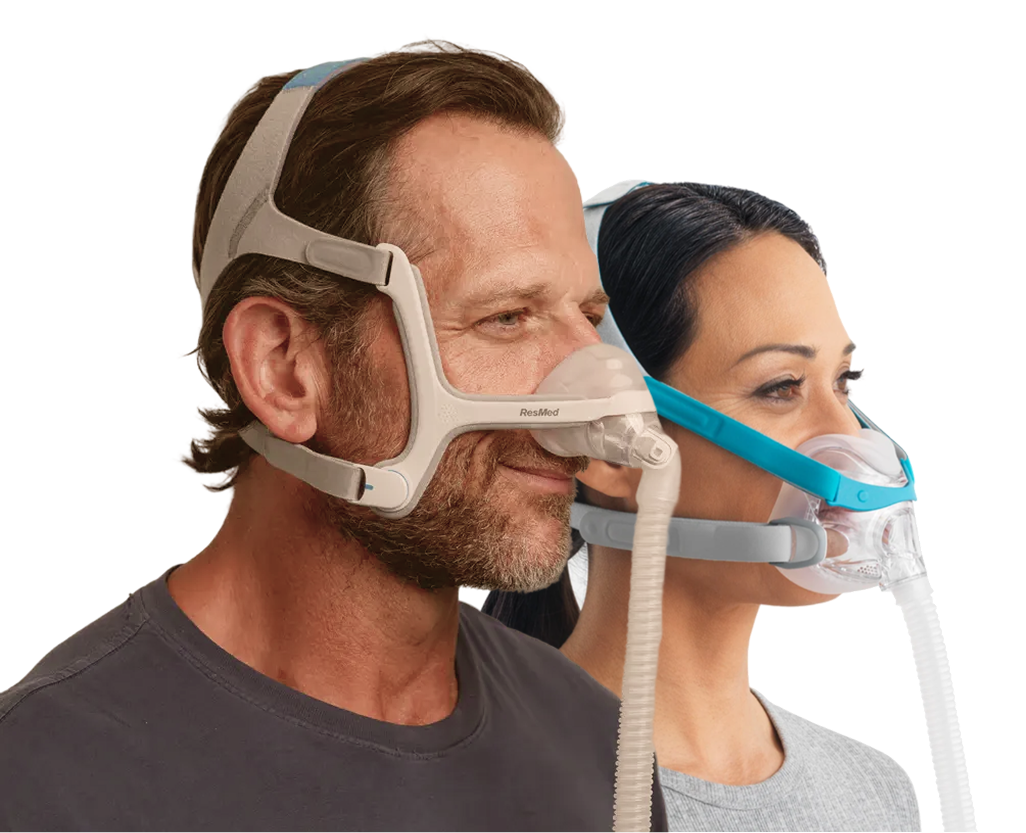For first-time adjustments, the recommended ResMed AirSense 10 settings typically fall between 6 cm and 20 cm H₂O. If you find the pressure uncomfortable, notice worsening sleep apnea symptoms, or receive new guidance from your doctor, you may need to make modifications. This simple guide will walk you through updating your device settings. In this article, we’ll cover how to adjust the pressure on the ResMed AirSense 10, explain situations How to adjust air pressure on Resmed Airsense 10? and share expert advice to help you get the most out of your CPAP therapy.
CPAP ERP Pressure Settings
EPR stands for Expiratory Pressure Relief. This is the name that ResMed has trademarked for its version of the exhalation relief feature, which is something that most CPAP machines have. Exhalation relief is an optional setting that lowers your incoming pressure level while you're exhaling. This helps make breathing feel more natural and has been shown to make therapy more comfortable.
The exhalation relief feature on any machine will lower your therapy pressure by 1 cmH2O for each level, up to a maximum of 3 cmH2O during exhalation. Some machines, like the ResMed AirMini, AirSense 10 and AirSense 11, even offer an option for EPR to be on full-time or only while Ramp mode is active.
If you breathe in at a pressure of 12 cmH2O and use an EPR setting of 2, you'll breathe out at a pressure of 10 cmH2O. If you're at 17 cmH2O with an EPR setting of 3, the pressure will drop to 14 cmH2O when you exhale, and so on. However, the pressure relief settings will never go below 4 cmH2O. This means that if you're at 6 cmH2O with level 3 EPR, it'll only go down to 4 cmH2O when you exhale, rather than 3 cmH2O.
What is the Most Common Pressure Setting?
The pressure in a CPAP machine is measured in centimeters of water pressure (cm H2O). Most CPAP machines have a pressure range of between 4 cm and 20 cm. The average pressure setting for people with OSA is about 9 cm H₂O.
How to change air pressure on Resmed Airsense 10?
Most of the time, the pressure settings are decided by a doctor and put into the machine by a technician. However, patients can change these settings in the "My Options" menu on their ResMed machine. Here are the steps:
+ Step 1: Press and hold the Home button and Dial button at the same time. Keep doing this until a Clinical Menu appears.

+ Step 2: Access the Clinical Menu, highlight Settings and press the dial. The Settings menu is displayed.
+ Step 3: Scroll down the page and click on both the 'Max Pressure' and 'Min Pressure' lines
+ Step 4: Turn the dial to adjust the setting and press the dial to save the change.

>>>> APAP vs CPAP: Key Differences & Benefits for Sleep Apnea
ResMed AirSense 10 adjust pressure youtube
CPAP Pressure Settings
Symptoms your CPAP Pressure is too high
If the air pressure is too high, you may feel uncomfortable when you're trying to sleep. This could make it hard to fall asleep or make you wake up many times during the night. Sometimes, very high air pressure can make you swallow air. This is called aerophagia. If this happens, you might feel really bad. You might feel very windy, your stomach might be very swollen and uncomfortable. Some patients may also experience a burning sensation in their noses/throats or fluid leaking from their ears, which can cause hearing loss.
Symptoms your CPAP Pressure is too low
If the pressure is too low, you may find it hard to breathe. This is because the air pressure may not be enough to keep the upper airway open. If patients have low air pressure, they might have more than five apnoea or hypopnoea events every hour. This doesn't really solve the sleep apnoea problem. Patients may still feel like they can't get enough air, feel tired, have high blood pressure and snore because the CPAP pressure isn't high enough, which means the therapy isn't working.
For most patients, the CPAP pressure setting is usually between 6 cm H2O and 14 cm H2O. But it's important to check with your sleep specialist to find the best air pressure level for you.
Set the pressure for the CPAP machine to get the best results.
Once you have bought a CPAP machine, it must be adjusted to the right level of air pressure for you. Sleep experts use a special number, called the apnea-hypopnea index (AHI), to work out the right pressure for CPAP. The AHI is a way of measuring how often a patient's breathing is disturbed during an hour of sleep.
The air pressure is adjusted on CPAP machines through a process called titration. We do not recommend that you adjust the air pressure of a CPAP machine yourself. Also, never get the air pressure adjusted without a prescription from a doctor. If you think the air pressure needs to be adjusted, talk to your sleep specialist. They can help you get it adjusted.
For CPAP machines that keep the air pressure the same, the air pressure is kept at the lowest level that is needed to keep the airways open all night. For auto-titrating pressure machines, you need to set both the lowest and highest pressure levels. But people's needs for air pressure can change over time, depending on their health and the age of their CPAP machine.
The pressure in the CPAP is automatically adjusted.
If you don't want to keep going to the doctor every time your air pressure needs adjusting, you could try an AutoPAP or APAP machine. Automatic PAP machines adjust the air pressure for you. They do this by detecting your breathing level. For example, it keeps a steady level of air pressure when a patient is about to fall asleep and only increases the pressure when there is no breathing for a short time. Once the event is over, it puts the air pressure back to normal so that people can breathe properly again.
You should speak to your doctor or sleep specialist to find out which one is best for you.
>>>> Before and After CPAP Machine
More About the ResMed AirSense 10 CPAP Machine
The ResMed AirSense 10 is a CPAP machine that a lot of people use. It helps people with sleep apnoea breathe more easily while they sleep. This device provides a steady flow of air pressure to keep the airway open, reducing the number of times a person stops breathing during the night and improving the quality of sleep.
If you're looking for the latest in comfort technology, the ResMed AirSense 11 model is worth considering. It has the EPR feature, a new design and different ways to connect.
If you want to learn more about the ResMed AirSense 10, our customer care team at www.cpapdiscount.au will be happy to help. They can help you choose the best CPAP machine for your needs. You can call us on 08 8166 0816 or email us at contact@cpapdiscount.au






